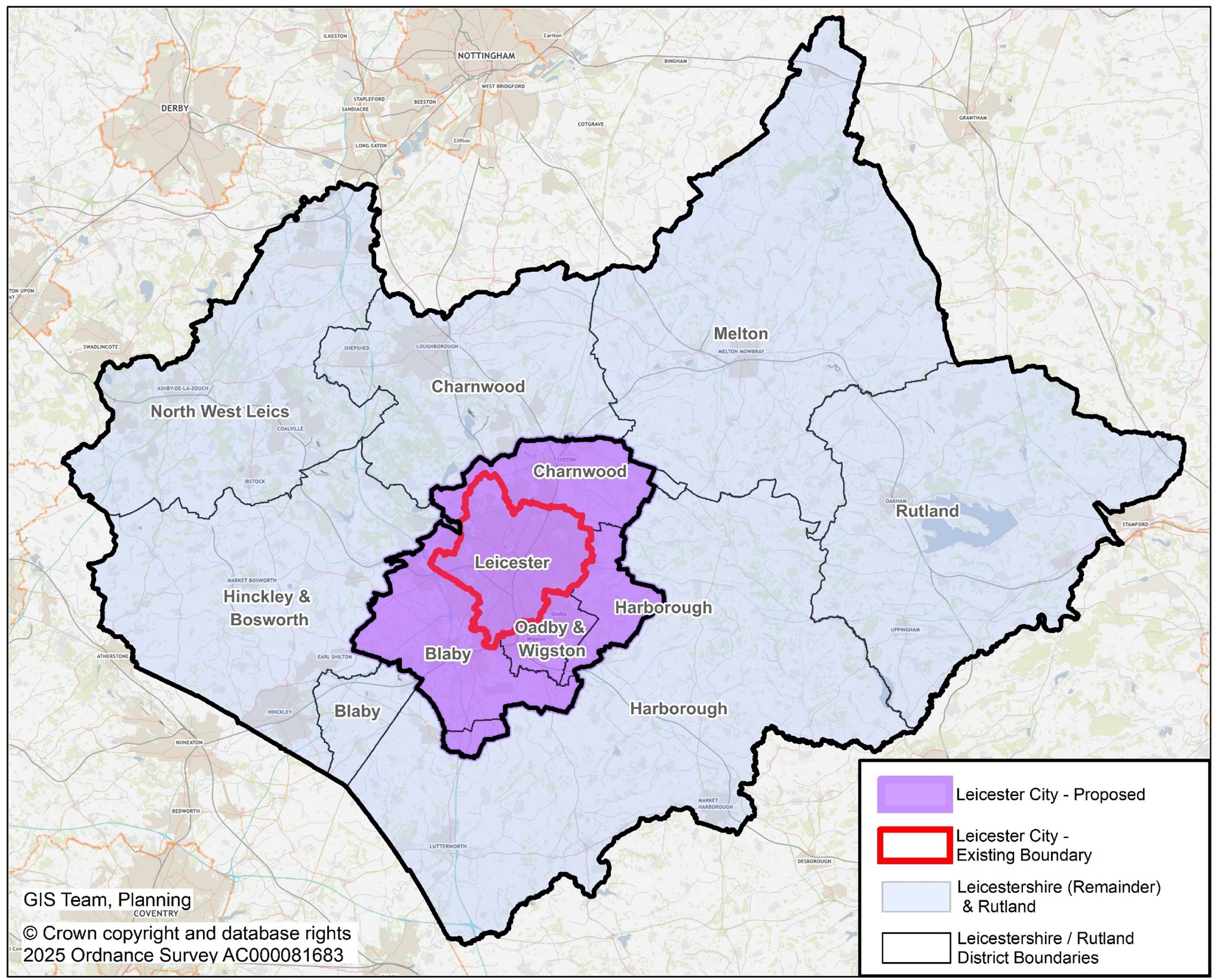LEICESTER City Council has confirmed it will submit a final proposal for boundary expansion as part of the biggest shake-up of local government in over 50 years.
The Government wants to move away from the two-tier system of councils, which still operates in areas of England, and replace them with larger, more efficient unitary authorities.
Councils, including in Leicester, Leicestershire and Rutland (LLR), were asked to work up final plans for change and propose their preferred option for local government across the area, by the end of November 2025.
The city council’s preferred option will set out a sensible expansion of Leicester’s historically constrained boundary with a proposal that is projected to achieve annual efficiency savings of £46 million across the LLR area – all of which could be put back into supporting frontline services.
This financial modelling, jointly commissioned with the county council, shows the city council’s preferred option would deliver the highest savings across the LLR area compared to plans proposed by the county and district councils.
The city council’s proposal would establish two unitary councils for Leicester, Leicestershire and Rutland. The city borders would expand into neighbouring built-up areas and suburbs and a second unitary authority would bring together the rural areas and market towns that surround Leicester.

The two new authority areas would have balanced populations of more than 500,000 people. This is in line with key Government criteria to ensure that new unitary authorities are the right size to achieve efficiency savings, improve public services and withstand financial shocks.
It would also mean future savings could be shared more equally, and the average cost per person of service delivery balanced more closely, between the two new unitary authorities.
City Mayor Peter Soulsby said: “Whichever side of the city/county boundary you live, the way services currently operate is wasteful and confusing. It simply does not make sense to have two different bin lorries, under contract to separate councils, collecting from the same suburban street.
“So, I remain absolutely convinced that any realistic option for local government reorganisation in Leicester, Leicestershire and Rutland must address the historic accident of our city’s boundaries – to the benefit of the whole region.
“In the 1970s, many English cities had their boundaries extended. Leicester wasn’t one of them. As a result, it is now one of the most tightly constrained major cities in the UK. Extending the city’s boundary would help address that and remove the illogical and confusing split that exists in our built-up urban area.
“Our proposal would achieve balanced population levels for the city and surrounding county areas. Modelling shows that this makes the best financial sense and is in the long-term interests of everyone.
“Reorganising the ten existing local councils into two unitary authorities of comparable size would deliver more efficient and cost-effective council services across the whole area with more streamlined decision-making.
“An expanded city will also be key to boosting housing and local economic growth and unlocking devolution.”
Under the city council’s preferred proposal, Leicester’s boundary would expand to include some land currently within parts of Blaby, Charnwood, and Harborough councils and all of Oadby & Wigston.
This would see the city population grow from 372,000 now to an estimated 622,000 by 2028, with a comparable projected population of 584,000 in the surrounding area.
It would provide space for the city’s estimated future housing need that would otherwise have to be found elsewhere – of 30,000 new homes by 2046.
City Mayor Peter Soulsby added: “It is disappointing that, despite promising initial signs, councils across Leicester, Leicestershire and Rutland have not been able to agree on a single option to reshape local government.
“It is a huge challenge, but one that presents immense opportunities.
“We have a once in a generation opportunity to create a more rational and easily understood geography for local government across the LLR area, reflecting the city’s growth over the last 100 years and helping to secure local prosperity for decades to come.
“While the county and districts have chosen effectively to turn their backs on the city in their proposals, our bid for a sensible expansion of Leicester’s boundaries will secure the most positive outcome for the whole area and for all local communities.”
Leicester City Council’s proposal for Local Government Reorganisation was considered at a special meeting of the council’s Overview and Scrutiny Committee on 10 November. It will now go before a meeting of Full Council on 20 November.
The final proposal must be submitted to Government by 28 November.
